Abstract
The enhanced mineralization of immobilized nitrogen by bacteriophagous protozoa has been thought to favor the nitrification process in soils in which nitrifying bacteria must compete with heterotrophic bacteria for the available ammonium. To obtain more insight into this process, the influence of grazing by the flagellate Adriamonas peritocrescens on the competition for ammonium between the chemolithotrophic species Nitrosomonas europaea and the heterotrophic species Arthrobacter globiformis in the presence of Nitrobacter winogradskyi was studied in soil columns, which were continuously percolated with media containing 5 mM ammonium and different amounts of glucose at a dilution rate of 0.007 h-1 (liquid volumes). A. globiformis won the competition for ammonium. The grazing activities of the flagellates had two prominent effects on the competition between N. europaea and A. globiformis. First, the distribution of ammonium over the profile of the soil columns was more uniform in the presence of flagellates than in their absence. In the absence of flagellates, relatively high amounts of ammonium accumulated in the upper layer (0 to 3 cm), whereas in the underlying layers the ammonium concentrations were low. In the presence of flagellates, however, considerable amounts of ammonium were found in the lower layers, whereas less ammonium accumulated in the upper layer. Second, the potential ammonium-oxidizing activity of N. europaea was stimulated in the presence of flagellates. The numbers of N. europaea at different glucose concentrations in the presence of flagellates were comparable to those in the absence of protozoa. However, in the presence of flagellates, the potential ammonium-oxidizing activities were four to five times greater than those in the absence of protozoa.
Full text
PDF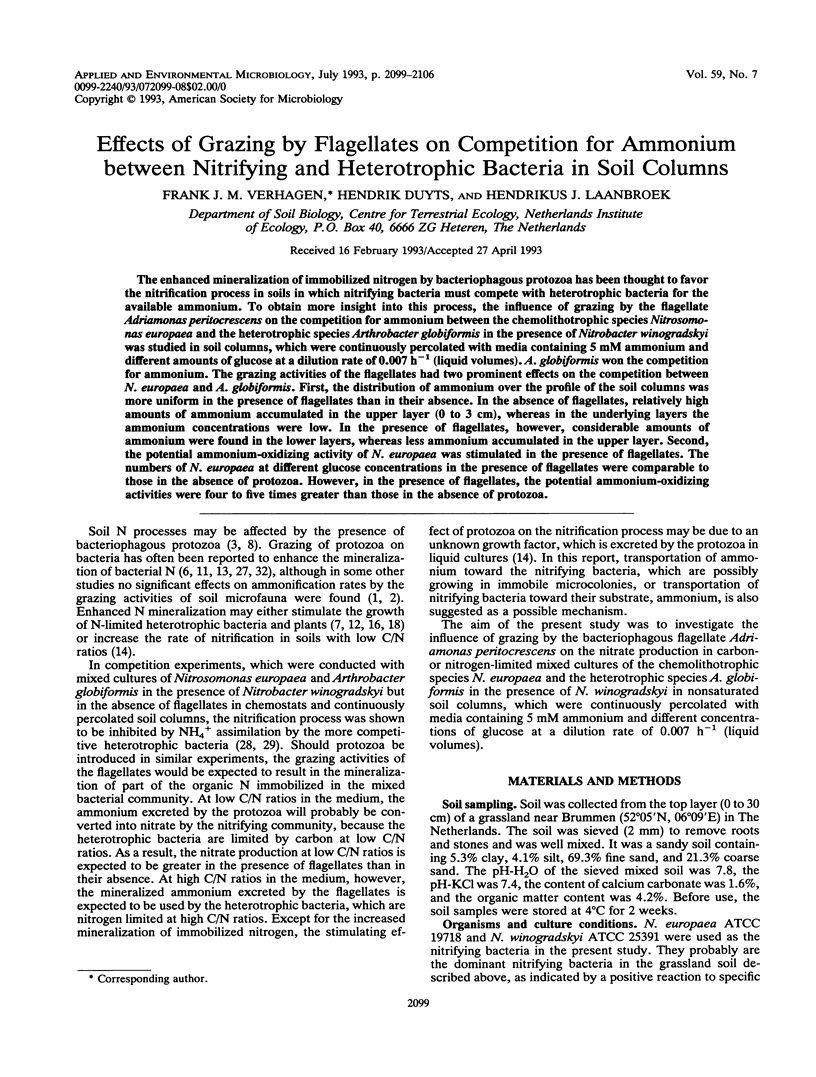
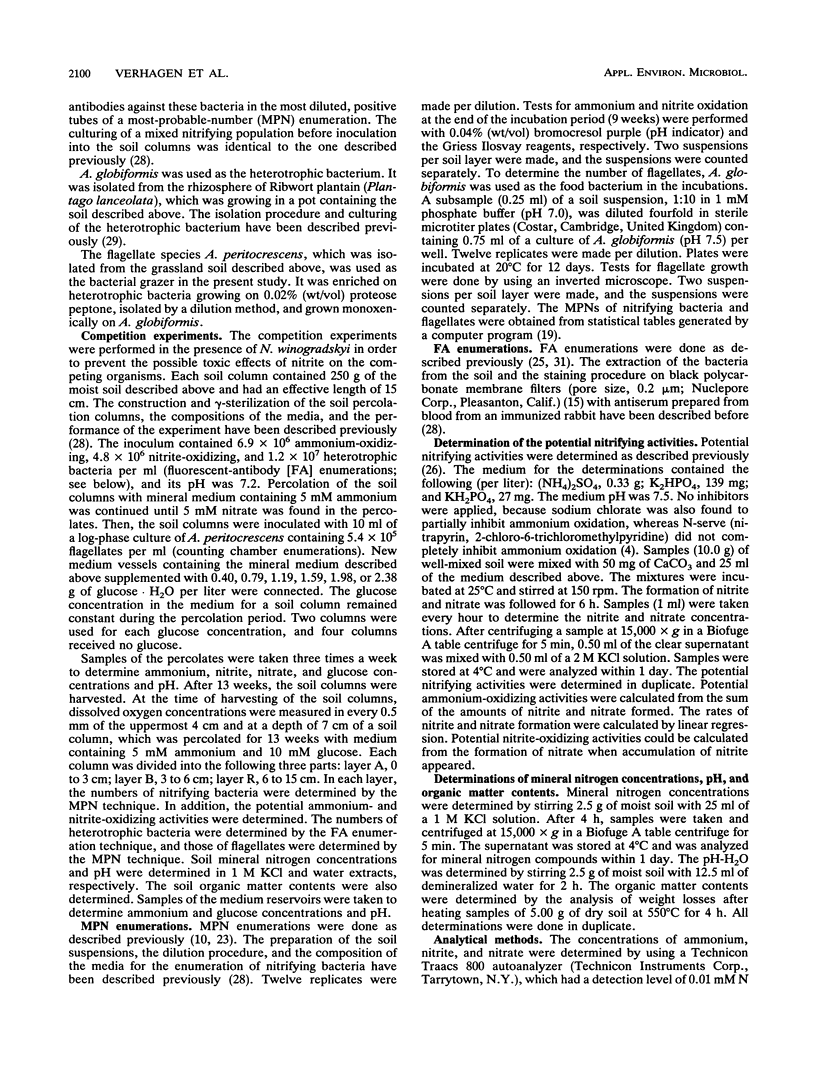
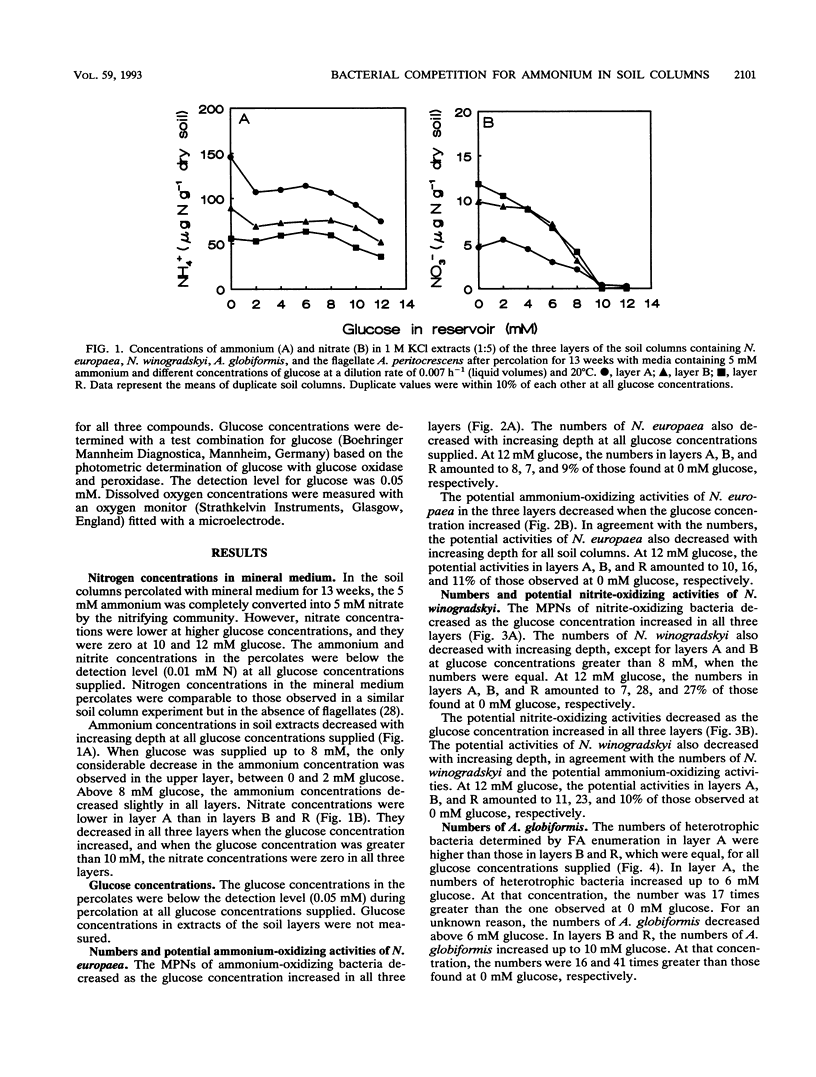
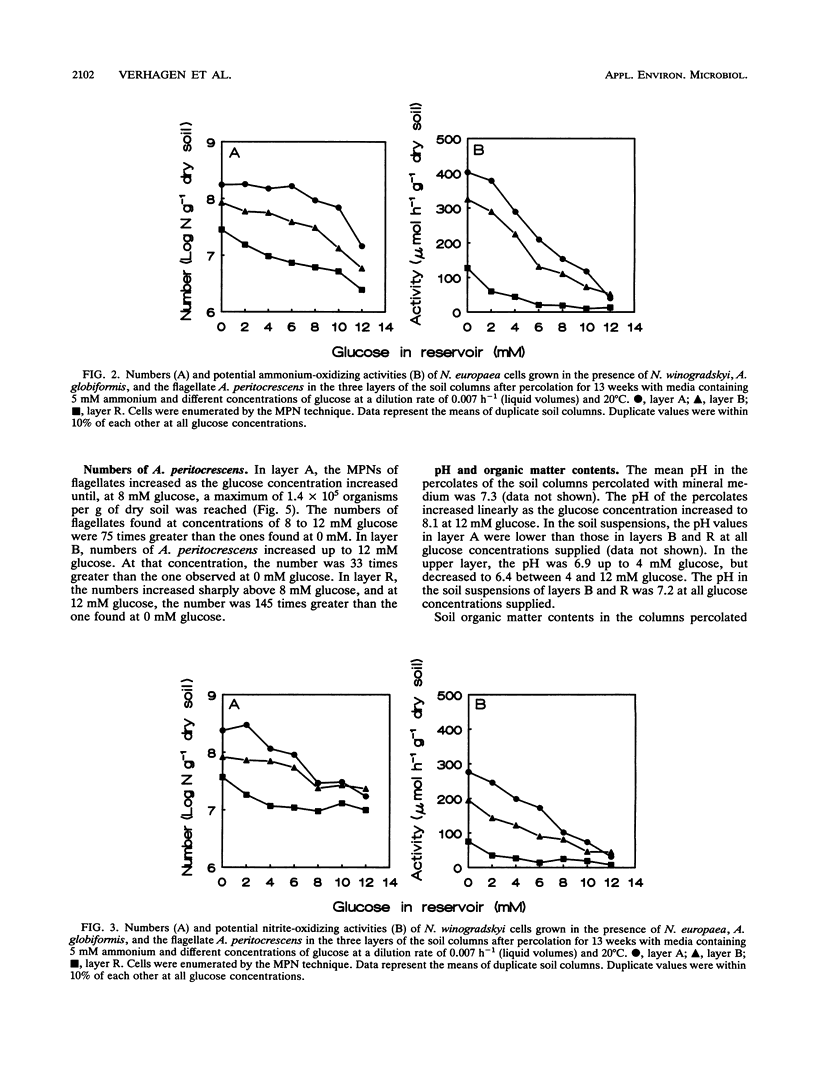
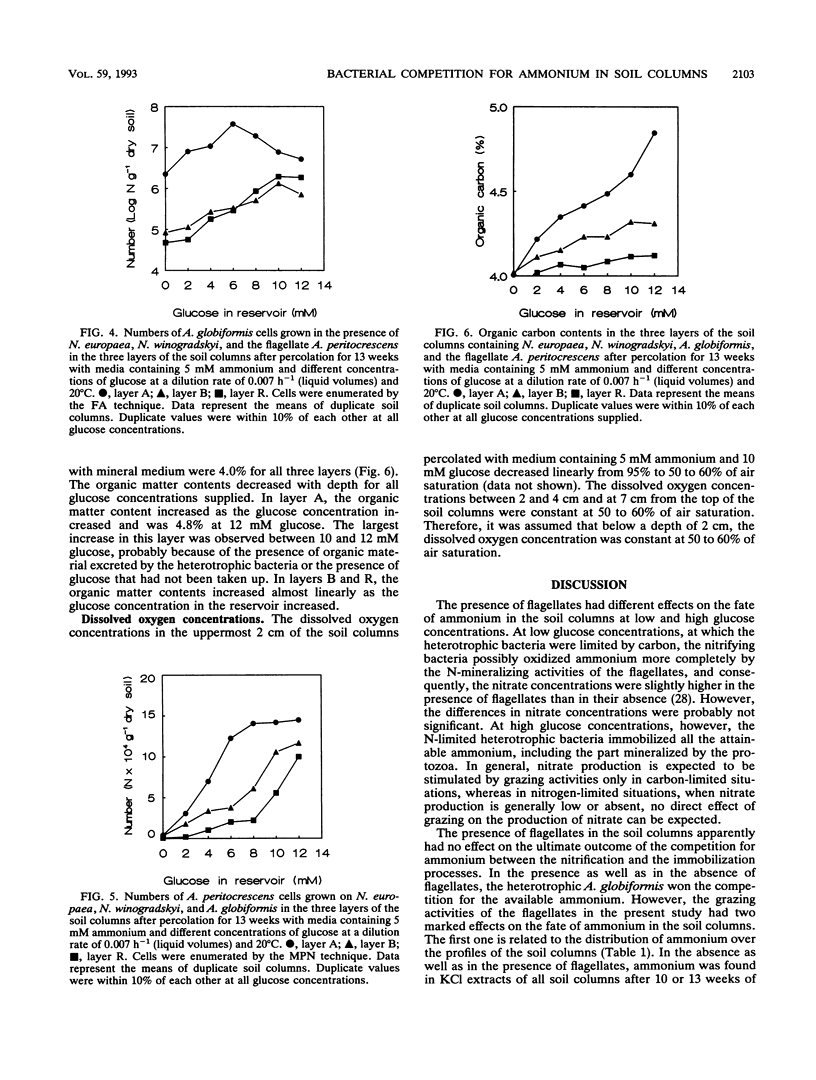
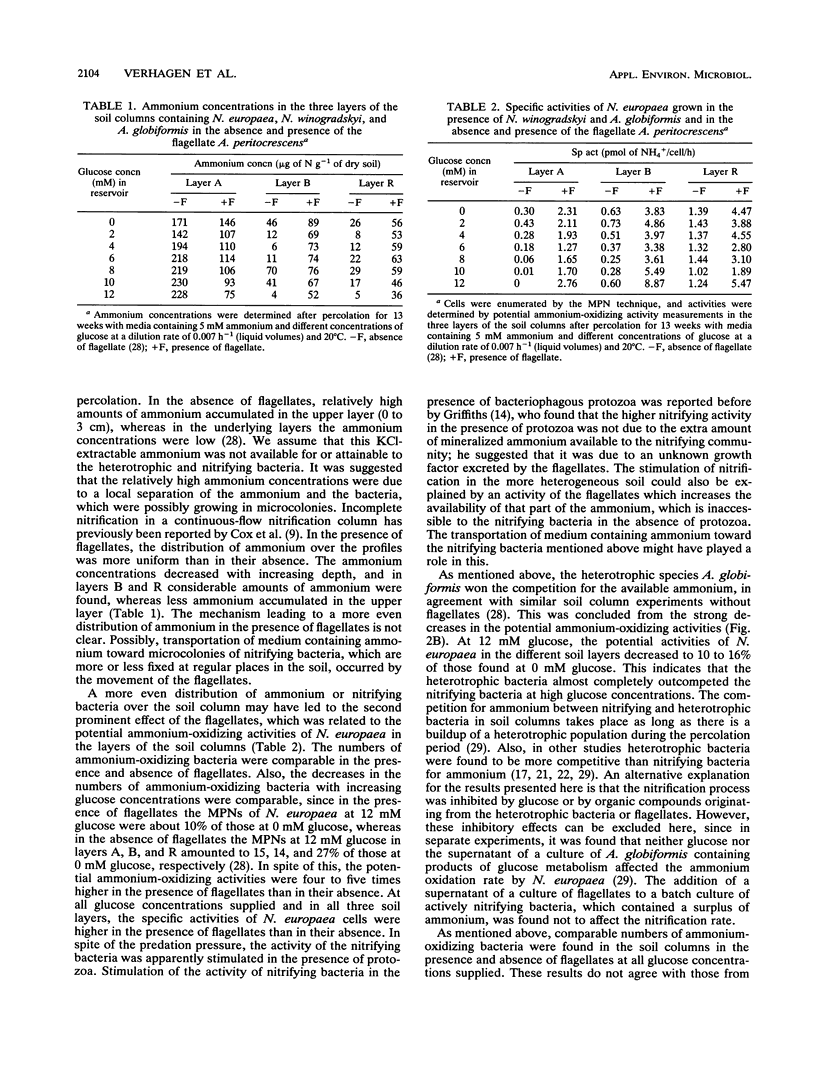
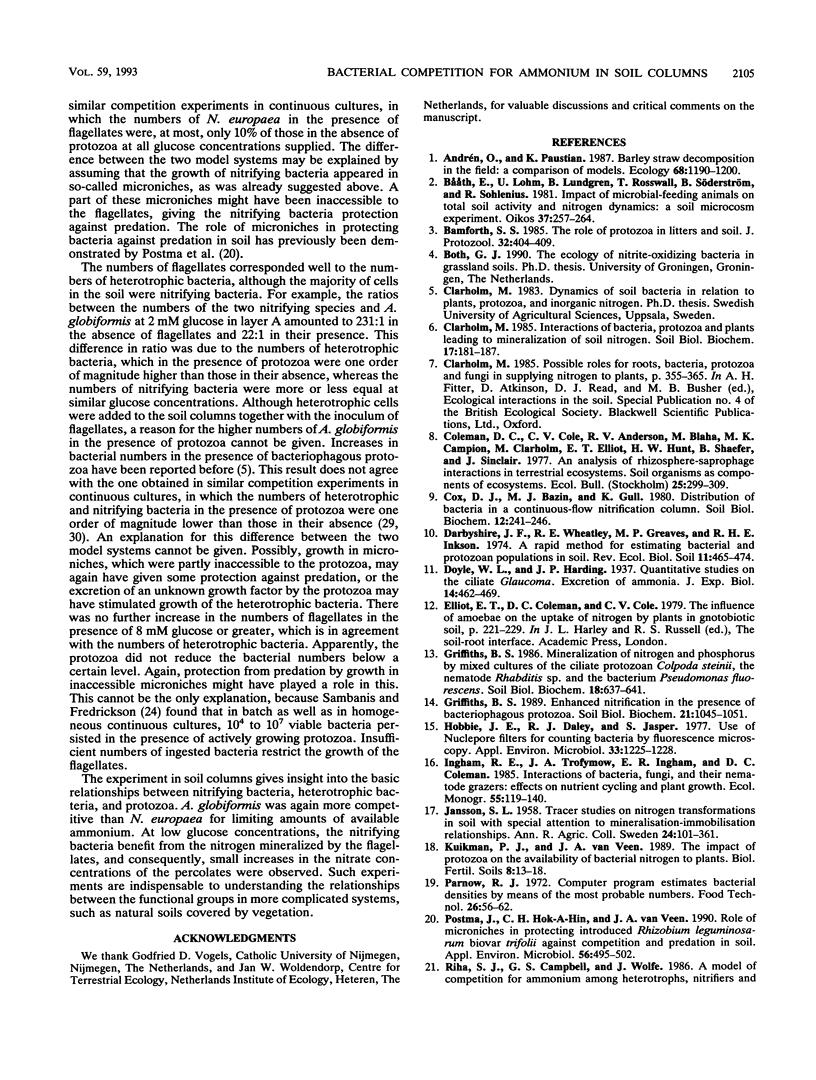
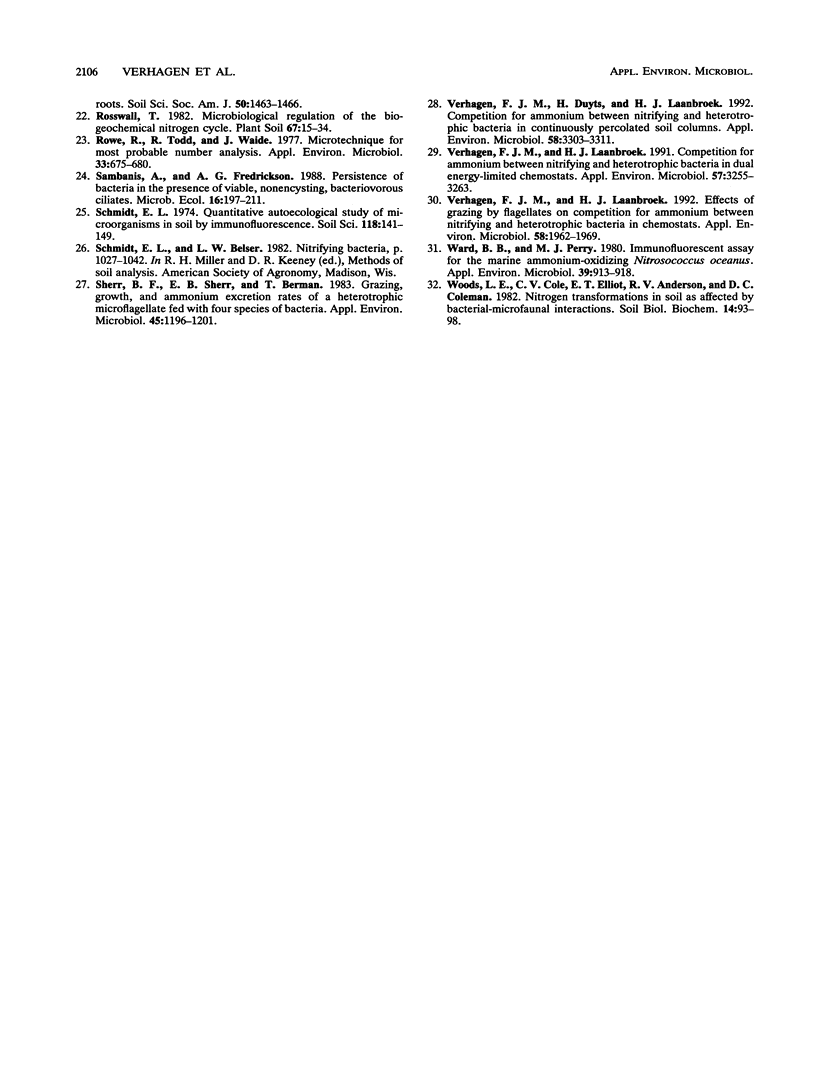
Selected References
These references are in PubMed. This may not be the complete list of references from this article.
- Hobbie J. E., Daley R. J., Jasper S. Use of nuclepore filters for counting bacteria by fluorescence microscopy. Appl Environ Microbiol. 1977 May;33(5):1225–1228. doi: 10.1128/aem.33.5.1225-1228.1977. [DOI] [PMC free article] [PubMed] [Google Scholar]
- Postma J., Hok-A-Hin C. H., van Veen J. A. Role of Microniches in Protecting Introduced Rhizobium leguminosarum biovar trifolii against Competition and Predation in Soil. Appl Environ Microbiol. 1990 Feb;56(2):495–502. doi: 10.1128/aem.56.2.495-502.1990. [DOI] [PMC free article] [PubMed] [Google Scholar]
- Rowe R., Todd R., Waide J. Microtechnique for most-probable-number analysis. Appl Environ Microbiol. 1977 Mar;33(3):675–680. doi: 10.1128/aem.33.3.675-680.1977. [DOI] [PMC free article] [PubMed] [Google Scholar]
- Sherr B. F., Sherr E. B., Berman T. Grazing, growth, and ammonium excretion rates of a heterotrophic microflagellate fed with four species of bacteria. Appl Environ Microbiol. 1983 Apr;45(4):1196–1201. doi: 10.1128/aem.45.4.1196-1201.1983. [DOI] [PMC free article] [PubMed] [Google Scholar]
- Verhagen F. J., Duyts H., Laanbroek H. J. Competition for Ammonium between Nitrifying and Heterotrophic Bacteria in Continuously Percolated Soil Columns. Appl Environ Microbiol. 1992 Oct;58(10):3303–3311. doi: 10.1128/aem.58.10.3303-3311.1992. [DOI] [PMC free article] [PubMed] [Google Scholar]
- Verhagen F. J., Laanbroek H. J. Competition for Ammonium between Nitrifying and Heterotrophic Bacteria in Dual Energy-Limited Chemostats. Appl Environ Microbiol. 1991 Nov;57(11):3255–3263. doi: 10.1128/aem.57.11.3255-3263.1991. [DOI] [PMC free article] [PubMed] [Google Scholar]
- Verhagen F. J., Laanbroek H. J. Effects of Grazing by Flagellates on Competition for Ammonium between Nitrifying and Heterotrophic Bacteria in Chemostats. Appl Environ Microbiol. 1992 Jun;58(6):1962–1969. doi: 10.1128/aem.58.6.1962-1969.1992. [DOI] [PMC free article] [PubMed] [Google Scholar]
- Ward B. B., Perry M. J. Immunofluorescent Assay for the Marine Ammonium-Oxidizing Bacterium Nitrosococcus oceanus. Appl Environ Microbiol. 1980 Apr;39(4):913–918. doi: 10.1128/aem.39.4.913-918.1980. [DOI] [PMC free article] [PubMed] [Google Scholar]


